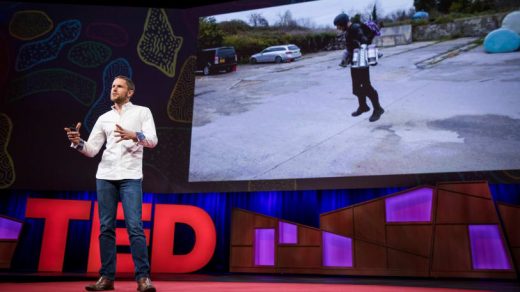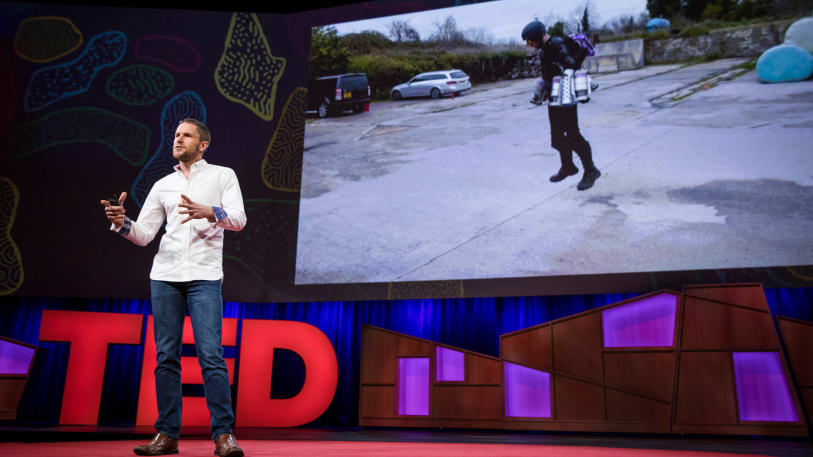Could You Handle Your Commute In This Iron Man-Like Jet Pack?
Eighteen months ago, British inventor Richard Browning tried an experiment: he strapped a small gas turbine to his arm to see if he could get liftoff (don’t try this at home, we’re obligated to add). Several experiments later, after he and his team added more engines to each arm and leg, his homemade jetpack was working, and he could fly for as long as 12 minutes.
At TED 2017, he headed outside to demonstrate for the crowd. The vision, for the moment, is to build a new type of extreme sports equipment–though it could potentially be used in other ways, such as military rescues in areas where a helicopter might attract gunfire.
Just saw Richard Browning fly his jetpack at #TED2017 pic.twitter.com/V8Qx39JVaT
— Adele Peters (@adele_peters) April 27, 2017
“For the immediate future, I would liken it to a jet ski,” Browning tells Fast Company. “There’s no real practical purpose to it, it’s just a massive amount of fun. But, like technology has a habit, I think actually, by accident, we’ve opened up a whole new avenue of human flight.”
Through his startup, Gravity, he’s working to build a version that can stay in the air longer and fly higher. “I don’t think anyone’s going to go down to Walmart or take the kids to school in any of this stuff for a while,” he told the audience at TED. “But the team at Gravity are building some awesome technology that’s going to make this look like child’s play.”
Browning’s vision of an “augmented human” was inspired by his father’s dreams of flight, and his own realization that a set of small jet engines might actually get him airborne.
“I think we all, every now and then, dare believe something that’s on the edge of our capability,” says Browning. “And when that thing is also on the edge of what the rest of society thinks is impossible, that’s even more exciting. Sometimes, very rarely, one of those things gets across the line.”
The engines could run on biodiesel, but Browning acknowledges that the flight suit isn’t exactly sustainable, at least in its current form. “Even in the display today, I think we burned through 12 liters of fuel,” he says. “It’s not an efficient way of moving around. But then, it’s early stage.”
(39)



